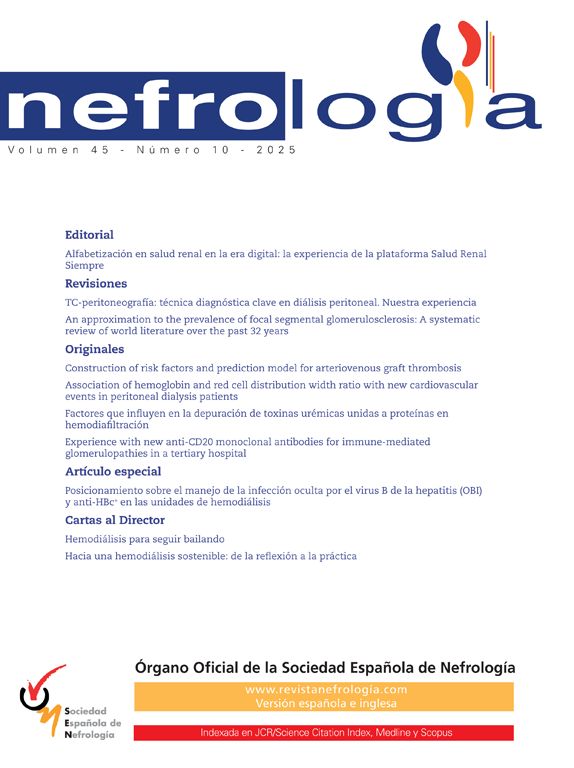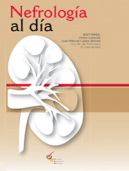Intestinal diseases have been shown to be associated with an increased risk of kidney stone disease (KSD) through different mechanisms that eventually lead to hyperoxaluria, a low urine pH and/or a concentrated urine.1 Coeliac disease is the commonest form of intestinal malabsorption in adults in the Western world.2 A meta-analysis in 2018 published in the American Journal of Gastroenterology showed that coeliac disease is associated with 90% increased risk of urinary stones which is independent of overt malabsorption.3
We describe the case of a 40-year-old Maltese female with a genetically confirmed diagnosis of cystinuria who experienced nine hospital admissions over the past 15 years due to recurrent renal colic and progressive bilateral nephrolithiasis.
In view of the significant bilateral kidney stone burden, the patient required multiple interventions including nephrostomy and ureteric stent insertions, percutaneous nephrolithotomy (PCNL), extracorporeal shock wave lithotripsy (ESWL) and flexible ureteroscopies.
The patient also required frequent renal imaging in the form of CT KUBs and US kidneys in view of recurrent nephrolithiasis over the past 15 years and these imaging tests highlight the persistent significant bilateral kidney stone burden of the patient despite being treated for cystinuria and maintaining optimal alkaline urine pH levels (Fig. 1).
Non-contrast CT KUB which shows a swollen left kidney secondary to a stone with maximal size of 2.0cm in the left PUJ as well as multiple small stones in the right lower calyces of the kidney and left middle and lower calyces. This highlights the patient's significant stone burden despite being on optimal treatment for cystinuria.
The diagnosis of cystinuria had been confirmed on genetic testing which showed the homozygous pathological variants p.Y151N [NM_000341.3:c.451T>A] in SLC3A1. She was on potassium citrate and on high hydration therapy but not on any chelation drugs. Tiopronin use had previously been complicated by nephrotic syndrome which had resolved on stopping the medication. Despite this, she was able to maintain urine cystine levels of less than 100mg/L.
Upon referral to metabolic kidney stone clinic in Mater Dei Hospital, all the previous medical investigations were retrospectively analysed. It was noted that wet chemical analysis of a kidney stone two years prior had confirmed the presence of calcium oxalate within the stone.
A consequent metabolic work-up in the clinic showed significantly elevated anti-TTG levels of 79.3 (0.1–9.0IU/mL). The patient denied any overt gastrointestinal symptoms and had no other abnormal biochemical indices in keeping with a malabsorptive disease.
A subsequent gastroscopy showed evidence of duodenitis and duodenal biopsies showed atrophic changes with distorted and flattened villi with prominent Brunner's glands entering high up into lamina propria. This confirmed a diagnosis of coeliac's disease. The patient was consequently prescribed a gluten-free diet.
A 24-h urine oxalate level done one month after starting a gluten-free diet was normal at 15.3mg/24h. No prior 24-h urine oxalate levels were available for comparison.
This case highlights the association of intestinal disease with kidney stone disease (KSD). Our patient has two risk factors for KSD – cystinuria and coeliac disease.
The main underlying mechanism likely responsible for the increased risk of kidney stone disease in coeliac's disease is enteric hyperoxaluria. This is a metabolic disorder characterised by increased oxalate excretion in the urine secondary to increased absorption of dietary oxalate in the colon. This occurs in any malabsorptive syndrome of the bowels including coeliac's disease. In intestinal malabsorption, fatty acids are not absorbed by the small bowel and hence these fatty acids bind to massive amounts of dietary calcium in the colon. Therefore, a large part of dietary oxalate is no longer bound to calcium, leading to an increased absorption of oxalate in the colon. This leads to increased systemic circulation of oxalate and therefore leads to hyperoxaluria.4
A study by Ciacci et al. in 2008 assessed urinary variables via 24-h urinary collection of 45 patients with untreated coeliac's disease vs 45 healthy volunteers (who were matched in terms of age, weight and gender). The study showed that the two main urinary abnormalities in untreated coeliac's disease were hyperoxaluria and hypocalciuria which were both correctible with a gluten-free diet. It also showed that urinary oxalate excretion is not affected by coeliac's disease severity and hence the risk of kidney stone disease in coeliac's disease is independent of overt malabsorption.5
In patients with recurrent urinary stones (especially oxalate stones), a coeliac screen may prove to be an important test to be performed as part of the work-up, as in untreated coeliac's disease, a gluten-free diet reduces KSD risk and oxaluria.
CRediT authorship contribution statementJulian Delicata and Matthias Grech were responsible for the conception and design of this write-up. Julian Delicata was the lead clinician of this case. Julian Delicata and Matthias Grech contributed to the literature review and write-up. All authors were involved in the final approval of this manuscript.
FundingNo funding was received.
Conflicts of interestThe authors have no conflicts of interest to declare.








